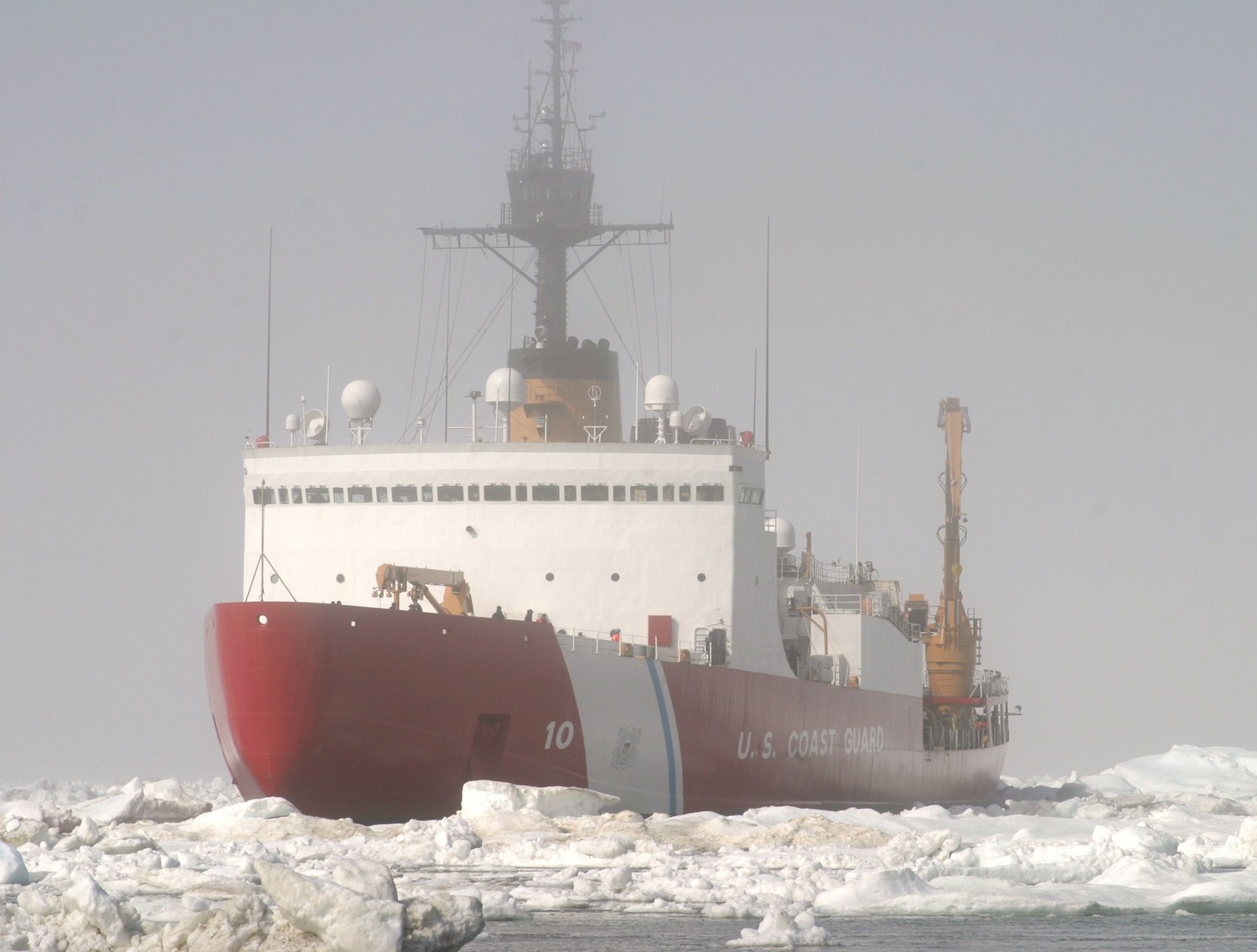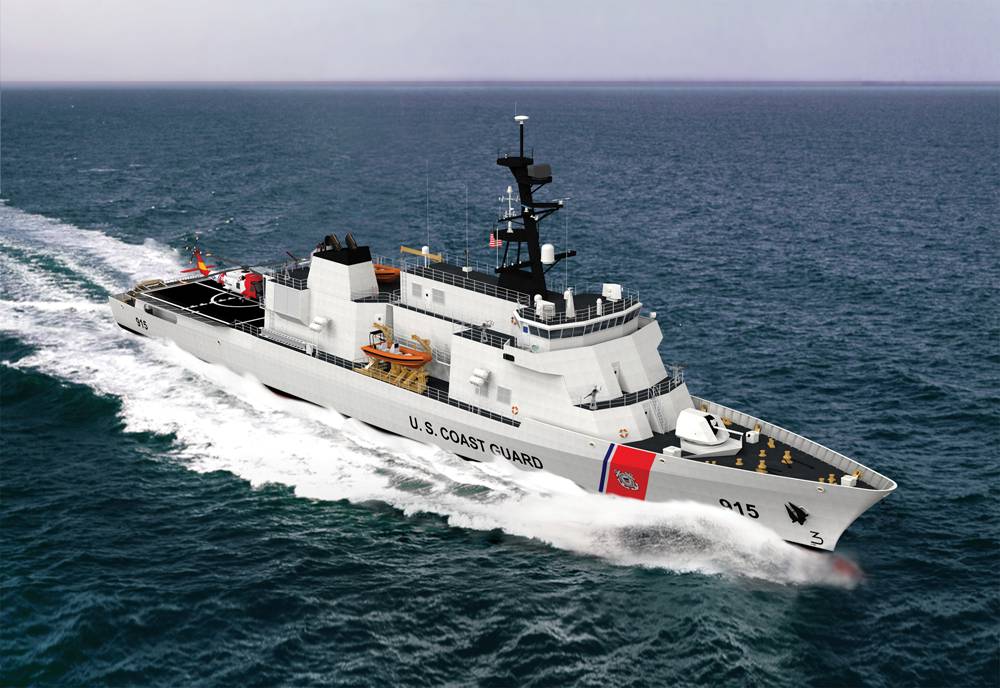
The U.S. Coast Guard has begun work to design and buy three heavy and three medium polar icebreakers, but the service reserves the right to increase the size of the program or even add offensive weapons to them if needed to respond to a rapidly changing Arctic environment, the commandant said.
Adm. Paul Zukunft told the House Appropriations homeland security subcommittee today that three of each icebreakers was the shipbuilding requirement determined in a study five years ago and would still meet today’s requirements.
However, he noted that “ice has retreated at record rates” since then, which makes oil and gas reserves more accessible – which creates a particularly thorny problem for the United States, which would like to claim these resources for its own but hasn’t ratified the U.N. Law of the Sea Convention treaty that would validate this claim.
“We have sovereign interests at stake up there as well. We have seen China, for example, with their icebreaker (in the region). … We have not ratified the Law of the Sea Convention so it is treated like it is a global commons. So if at some point in the future we ratify the Law of the Sea, we stake our claim, I would be naïve to believe the claim would not be challenged by other who claim they have operated there repeatedly and this is now a global commons and next thing we know we see a Chinese mobile offshore drilling unit going into the extended continental shelf to extract what otherwise would be U.S. oil. We see Russia with their 40 [icebreakers], right now, they’re still building their fleet out, prepared to deliver two icebreaking corvettes that will carry cruise missiles in the year 2020,” Zukunft told the subcommittee.
“We have sat down with the Navy and we have created what’s called a Cooperative Strategy for the 21st Century, and when we look at the Arctic, the Navy says, Coast Guard, you’ve got the Artic. So as we look at who has the sole responsibility for exercising sovereignty in the Arctic region, it’s the United States Coast Guard. So that gets us to a point of why we need national assets, icebreakers, to exert sovereignty there. And right now we’re trying to do it with a ship that’s 40 years old, is literally on life support, which is why we’re going to accelerate the delivery of this first icebreaker, and we’ll need another one right behind that so we can deactivate” the only American heavy icebreaker today, USCGC Polar Star (WAGB-10).
Zukunft argued that the U.S. needed to maintain persistent presence in the Arctic and Antarctic, leading to the need for three heavy and three medium icebreakers: “you really need three to keep one there permanently; one’s in maintenance, one’s ramping up to get ready and the other’s deployed. … It takes three to make one, which is how we got to three, if we need permanent presence north and south.”

Given how rapidly the Arctic is changing, and the potential showdown in the Arctic over U.S. sovereign waters, Zukunft said the Coast Guard was building in some flexibility to change plans if needed down the road.
He added that the icebreaker design will leave room for new capabilities as well, including offensive weapons if needed, if tensions ramp up and the Navy continues to cede the Arctic to the Coast Guard.
“I have to look differently at what an icebreaker does. We need to reserve space, weight and power if we need to strap on an [anti-ship cruise] missile package on it,” he said.
While building out a program of record, “you have a hot production line – maybe 10, 12 years from now the world changes but at least you are producing these at an affordable price, a predictable price, and on schedule,” he said, which would make it easier to continue the production line and build more if needed.
“There may be a change, but at least as we see the world right now, three heavy and three medium would meet today’s requirements based on the threats that we see.”
The first heavy icebreaker is expected to deliver in 2023, and the Coast Guard has so far stood up an integrated program office with the Navy and awarded contracts for industry studies on the future ship’s design and capabilities.
Also during the hearing, Zukunft told lawmakers that he appreciates their past and potentially future endeavors to find more money to continue building National Security Cutters, but he made clear that the Offshore Patrol Cutter is his top priority now and any additions to the NSC program could not come at the expense of OPC.
The Coast Guard originally intended to buy eight NSCs, but in Fiscal Year 2016 Congress awarded money for a ninth. During today’s hearing, subcommittee chairman Rep. John Carter (R-Texas) suggested that during the upcoming FY 2018 budget negotiations, lawmakers may be interested in again increasing the size of the program.
“When we laid out our program of record for eight National Security Cutters – with our biggest concern being, with any additional growth, what risk that would impinge upon the buildout of the Offshore Patrol Cutter – what we received was topline relief to build a ninth National Security Cutter, with long lead time materials – in fact, that ship is under construction right now,” Zukunft said.
“Will we put that ship to use? Absolutely. In fact, today one of our National Security Cutters, the Hamilton – she’s still in her first year of service – she will be returning to port with 17 metric tons of cocaine. In fact, there are 27 metric tons of cocaine on Coast Guard cutters today. So when we looked at our requirements were for our entire fleet, the full program of record, we didn’t add global refugee flows, we did not have trafficking activity, we weren’t addressing the Nine Dash Line, and we weren’t addressing potential conflict with North Korea. So the world has changed in a much more accelerated pace since we built out this program of record. But I’ll be specific – the Offshore Patrol Cutter is our number one priority in recapitalizing our legacy fleet today. A tenth National Security Cutter, if that is funded above the topline, will we put it to use? Absolutely. But we need to look at what the follow-on out-year costs are, not just the initial acquisition. As I mentioned earlier, it’s our annualized operations and maintenance funding – that needs to be built into this algorithm as well, not just acquisition but the sustainment piece of that as well.”

On the Offshore Patrol Cutter, for which Eastern Shipbuilding was awarded a $110 million contract for the first hull and options for eight more in September 2016, the commandant said “we are on target and tracking. … The ‘17 budget, it puts the long lead time materials in place. I have been down to Eastern Shipbuilding and they are ready to cut steel, to put that first ship in the water in the year 2021. So I am very confident that they will deliver a top-quality product on budget and on time.”
A fourth ongoing shipbuilding program for the Coast Guard is the inland tender, which the Coast Guard operates 35 of and whose average age is 52. Zukunft said the tenders protect inland river systems that contribute to $4.5 trillion in commerce every year, and the importance of finding an effective replacement cannot be understated.
“We’ve already reached out to the Army Corps of Engineers and are looking for a commercial off the shelf design for an inland tender that could be modified, depending on where it’s going to be operating, but would have the same engines, basically the same design, and could be built for roughly about $25 million a copy in a commercial shipyard here in the United States, which would also stimulate job growth as well,” he said.
Additional details about the Coast Guard’s FY 2018 needs will be revealed when the administration’s budget request is sent to Congress next week. These budget hearings are typically held after the budget goes out, but Carter noted that with a late start to budget season this year the subcommittee wanted to get a jump-start on its hearings.





